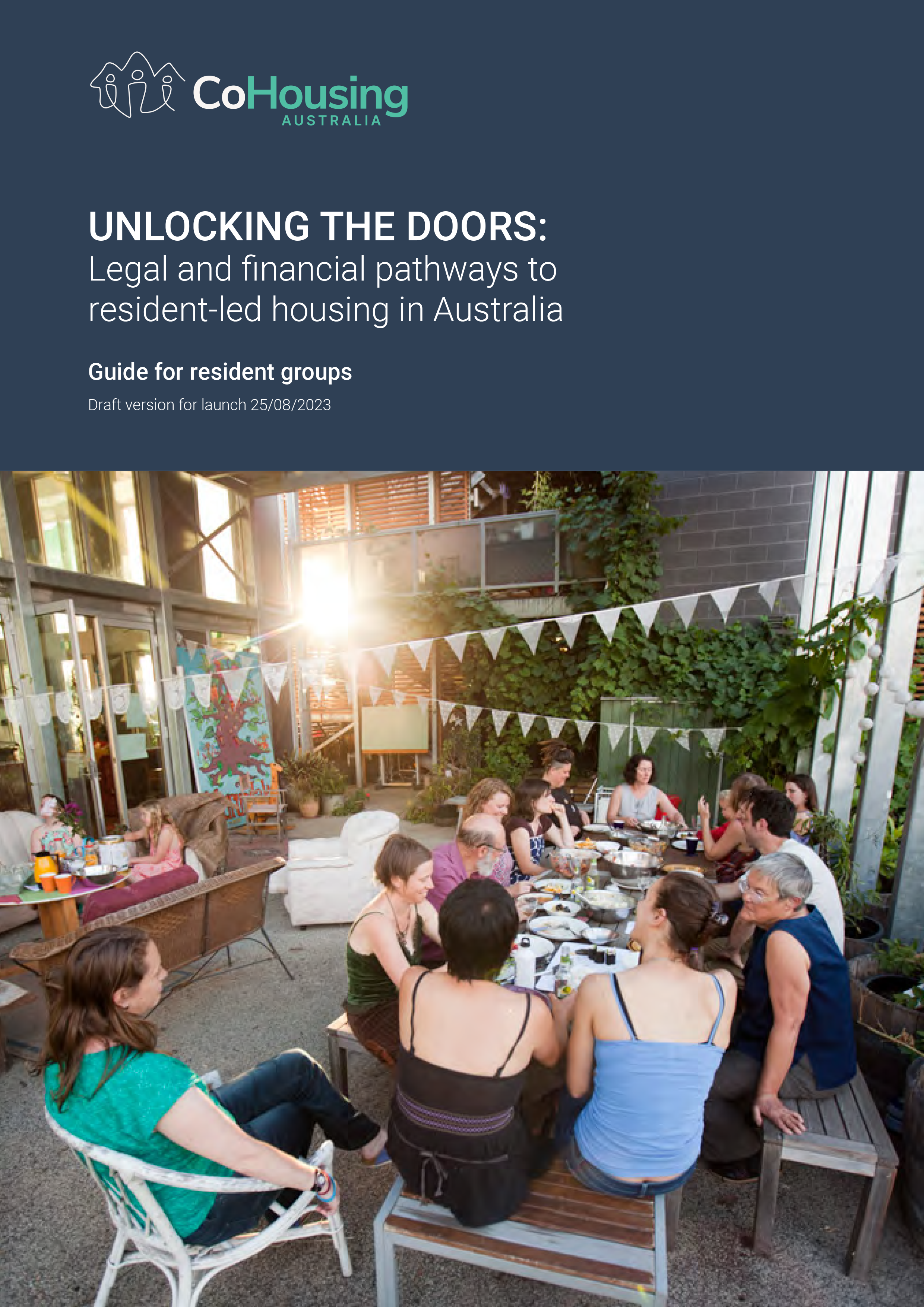Monday 15th of December 2025 7:30 pm (AEST)
CoHousing Australia September Webinar
Register in advance to receive the Zoom link to join the webinar
This is going to be a great session!
Come to hear the researchers discuss the new guide for developing community-led housing in Australia.
CoHousing Australia is proud to release a guide that will help local resident-led housing groups move closer to realising their cohousing dreams.
Through a Knowledge Exchange Grant awarded by the City of Sydney, CoHousing Australia was able to commission researchers to interview resident-led cohousing groups, property developers, and members of the finance, legal and development sectors.
The aim of the research was to identify the legal and financial barriers many cohousing groups were encountering and to identify the ways for those groups to make cohousing and collaborative housing a reality.
Research Director at the Institute for Sustainable Futures at the University of Technology, Sydney, Ms Caitlin McGee, and Research Fellow with the Sustainable Buildings Research Centre at the University of Wollongong, Dr Matt Daly led the research efforts. Members of Sydney Cohousing, AGEncy, and NewCOH (Newcastle Collaborative Housing) were on the steering committee for the project.
“This guide is an important tool for resident-led cohousing groups to make cohousing real. People love the idea of cohousing but from earlier research we knew people needed Australia-specific and more detailed legal and financial advice. This guide goes a long way to filling that gap,” Caitlin McGee, Research Director atof the Institute of Sustainable Futures, said.
“Cohousing is flourishing in many other parts of the world through government support and an ecosystem of deliberative housing,” said Elena Pereyra, CoHousing Australia co-chair.
“Increasingly, we’re hearing from people who don’t want what’s on offer in traditional housing, any more. Many people don’t live in nuclear families; a quarter of people live alone; half of all couples with children are divorced and are split across two households. The single house on a quarter acre block may have worked well in the 1950s but it’s not reflective of how many people want to live now,” Ms Pereyra said.
“This guide is just the beginning. There’s a big problem with how we deliver housing in Australia. Putting residents at the heart is integral to the solution,” Ms Pereyra said. “While all the focus at the moment is on affordability and supply, it’s important we also focus on communities that thrive.”
“Many other countries have a whole third sector of housing which is deliberative, resident-led housing, typically cooperatives and the like. We see that as providing alternatives when the current system in Australia is clearly not working for many people,” Ms Pereyra said.
The guide is not prescriptive about the model of cohousing (owner-occupier or rental; privately owned or a hybrid model) but does provide a cohousing group with a pathway through the financial and legal considerations. The guide focuses on predominantly owner-occupier, strata cohousing as it is perceived as the most viable option in the current housing market in Australia.
However, follow-up feasibility work on other housing models is exploring the viability of a rental cooperative in inner city locations in Australia.
When
Third Monday of the month
7:30 pm to 9:00 pm (AEST)
Where
Online
Contact
Cassie
info@cohousing.org.au
Areas of Interest

